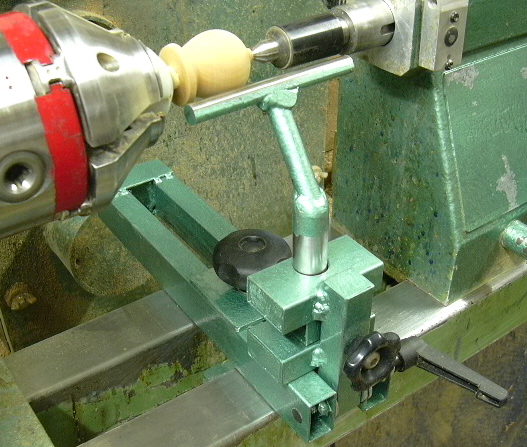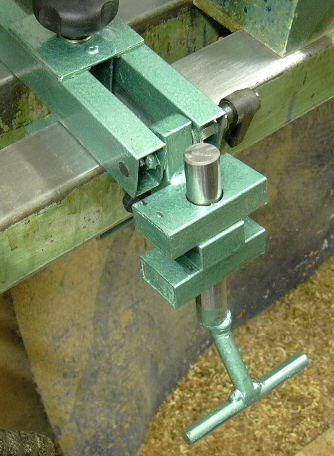
|
In
this picture you see the Tool Rest in it's normal working position.
The actual Tool Rest is the same Rest as I would use with my Standard Banjo and therefore this system could be used with any one of the numerous Tool Rests I have. Although the Rest shown was designed specifically for small items and I describe in a later Hints & Tips how this and other Rests were made. The Knob on the vertical pillar is for locking the Tool Post at the correct height. The Lever to the right locks the Tool Rest Holder Assembly in place. The large Knob at the top left of the picture is for fixing and locking the Banjo in place, when not required the Banjo can be easily removed and stored away. The Tool Post
Holder is made from 50mm x 20mm [2" x 7/8"] Box Section,
the upper and lower sections are welded to the vertical post with the
centre section loose and this performs the clamping action on the Post,
see details below. |
